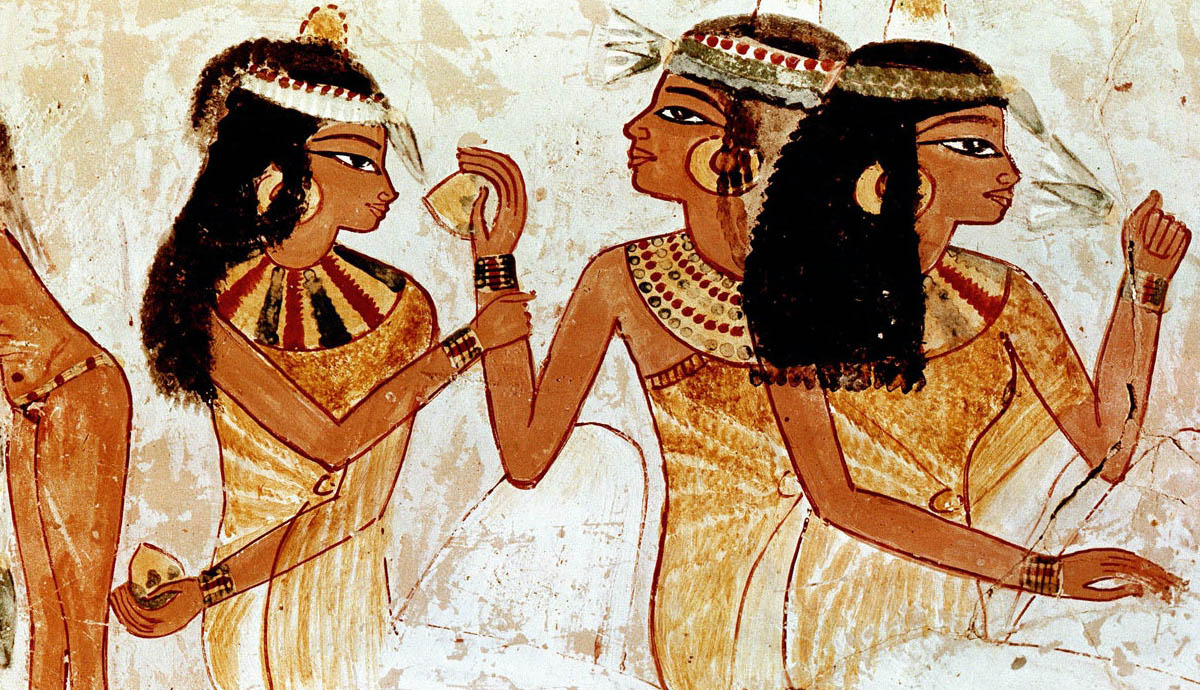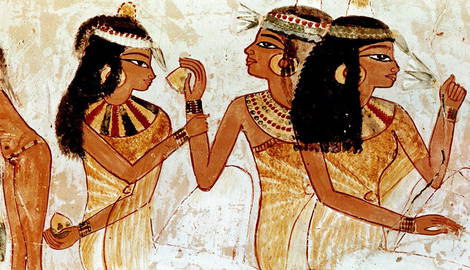
Women in ancient Egypt played an important role in many aspects of daily life and religion. They had equal rights to men with regards to the property and in court cases, but the average woman’s focus was on a traditional role as wife and mother. Women at the upper echelons of society could reach the same level as men, sometimes ruling the country and playing a prominent role in religious cults. In this article, I will review the role that women played in ancient Egyptian civilization.
Egyptian Pharaohs

During the vast majority of Egyptian history, men ruled the country. But under certain circumstances, women ruled as kings, especially when a suitable male candidate for the throne was lacking.
The most famous of these Egyptian rulers was Hatshepsut. She ruled Egypt when her husband Tuthmosis II died and her stepson Tuthmosis III was too young to take the throne. She built a memorial temple known as Deir el-Bahari and sometimes had herself depicted in statuary with a royal beard.

Of course, everyone is familiar with Cleopatra VII, who was of Greek origin. Popular media depicts her as a beautiful woman that seduced both Julius Caesar and Mark Antony before committing suicide by the bite of an asp. However, statues and coins with her likeness reveal that in reality, she was quite homely. Her charm and political prowess were probably the secrets to her success.
Ancient Egyptian Women And Her Role As A Wife

The most important role for an average woman in ancient Egypt was as a wife. A man was expected to marry around the age of 20 but it is not clear what the age of his bride would have been. Marriages were celebrated with an entire week of celebrations.
Royals often took their own sisters or daughters as wives and sometimes had multiple wives. Rameses II had 8 wives and other concubines who bore him over 150 children. The average Egyptian had a single wife. Adultery was seen as a grave crime that could be punished by death for the man at least. Sometimes marriages ended in divorce and remarriage was possible after a divorce or the death of a spouse. Sometimes the initial marriage contract contained a pre-nuptial agreement as to the terms of a possible future divorce.
Ancient Egyptian Women And Her Role As A Mother

To be a mother was the ultimate goal of most women in ancient Egypt. When children were not forthcoming, they engaged in magic, religious rituals, or took medical potions to overcome infertility. Those who successfully gave birth had to deal with a high infant mortality rate as well as the risk of dying during childbirth.

An ancient Egyptian wisdom text exhorted its readers to take care of one’s mother because she had done the same when the reader was young. The text describes a very traditional motherhood role. It said:
When you were born…she looked after you. Her breast was in your mouth for three years. When you grew up and your excrement was disgusting, she sent you to school and you learned how to write. She continued to look after you every day with bread and beer in the house.
Working Women

Most frequently, women were depicted in Egyptian art with yellow skin and men with red. This probably indicated that women spent more time indoors out of the sun and had paler skin. The responsibilities of motherhood probably precluded most women from taking on additional work.
However, there is evidence that some women engaged in physical labor outside the home. Women in tomb scenes are shown in the public marketplace trading goods alongside men. The wives of farmers would have helped them with the harvest.

Women also worked in fields that we consider more traditional for women. Old Kingdom statuettes depict women grinding grain to make flour. Pregnant women would have called on female midwives to deliver their babies as they squatted on bricks. Women also served as professional mourners at funerals, throwing dust on their heads and wailing.
Role Of Ancient Egyptian Women In Religion

Women played an important role in religious cults, especially that of the goddess Hathor. They served as singers, dancers, and musicians entertaining the deities.
The most prominent priestess role was the God’s Wife of Amun. Ruling kings were said to be the son of the god Amun and royal women of Dynasty 18 often bore this title. It fell into disuse before being revived in Dynasties 25 and 26 when the daughters of the Nubian kings who ruled Egypt bore the title. These Nubian women lived in Thebes and ran the day-to-day administration of the country on their fathers’ behalf.
Ancient Egyptian Goddesses

Goddesses played an important role in Egyptian religion. Their roles usually reflected that of women in society. Often, deities were arranged in triads or families. Among the most famous of these were Osiris and his wife Isis and son Horus. Another well-known triad is Amun and his wife Mut and son Khonsu. Temple complexes such as those at Karnak often had temples dedicated to all three members of a triad.

Some goddesses, while part of triads are well-known in their own right. These included the cow-headed goddess Hathor, who was approached by pilgrims looking to get pregnant or find a suitable spouse. Another female goddess was the bloodthirsty Sekhmet, with a lioness’ head. She was the goddess of war and pestilence and Amenhotep III erected hundreds of her statues at his temple in Thebes. The goddess Isis, who was seen symbolically as the mother of the ruling king, was often depicted nursing her son Horus.










